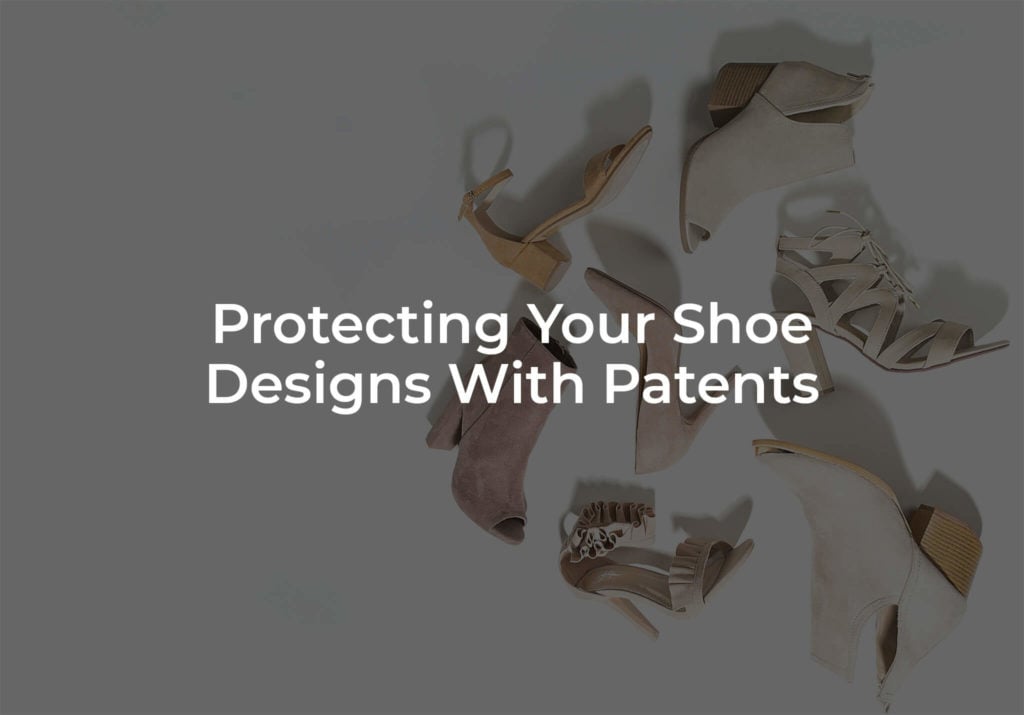Have you ever stopped and thought about the science and innovation that went into your shoes? Whether they are sky-high heels, comfy Crocs, or the latest in gym wear, chances are someone owns a patent for them.
The shoe market is a fierce one, and no one is willing to risk losing out because a competitor stole a great idea. If you have an innovative idea for a pair of shoes, then you need to follow suit and seek patent protection.
This guide will help you determine if your shoe creation is patentable, what type of patent you should apply for, and who you should turn to for help.
Are Shoe Designs Really Patentable?
The short answer is yes; shoe designs are patentable. There are two types of patents that you can have, design or utility. Having patents gives you the right to protect your shoe design from others using, selling, producing, or offering to sell a shoe that uses an element protected by your patent.
To determine you have the potential for securing a patent, determine if your shoe has a unique function or design. The next step is to perform a search and confirm that no one has already come up with your idea. You can then prepare and file your application. You’ll then need to track your application’s status and promptly respond to any communications sent by the USPTO.
Upon approval, protection lasts a specific amount of time. A design patent will last for 15 years from the date of approval by the patent office. A utility patent will last for 20 years from the date the patent grants your application.
Once you have patent approval, you can then profit by licensing out the right to use your inventions to shoe manufacturers.
Design Patents for Shoes
A design patent protects a new and original ornamental design for your item. You can only make one claim per each application. If you have multiple design elements that you want to protect, you may need to file multiple applications.
Your application should include a title, a brief description of your included drawings, and drawings of the design. For approval, a design patent must show that the design is new, original, not obvious, ornamental, and subject matter in an article of manufacture.
You can enforce your patent protection if you find another shoe that is “substantially the same” as the design you’ve received approval for. Having this type of protection helps your shoe to stay unique in its style and how it feels on the foot.
Decker UGG is famous for their boots. The company holds a patent for the Bailey Button, which is a single large button on the side. It also has a patent for a Bailey Button Triplet, a similar design with three buttons on the boot’s shaft.
You can seek out a design patent for the sole, upper, or heel.
Utility Patents for Shoes
A utility patent focuses on the structure and functionality of the shoe. This type of patent is more prevalent and traditionally thought of as the “stronger” protection tool. However, this isn’t necessarily the case with shoes, which are both a performance and fashion item.
You can use a utility patent to protect how you’ve constructed the shoe to improve its performance. This could apply to the heel, sole, or upper.
In practice, a utility patent could describe a high heel with an adjustable heel. The patent protects the functionality of the heel and how it changes in height. You can have multiple claims in a single utility patent.
For a successful application, you’ll need to include a written technical description of your shoe invention. You’ll also need to include detailed drawings of your invention. Your application needs to show that your invention is new, useful, and not obvious.
Shoe Patent Examples
Christian Louboutin holds a patent for one of the most famous heel designs in fashion. The instantly recognizable red bottoms are a protected design feature. Yves Saint Laurent discovered this the hard way when a court ruled in Louboutin’s favor.
However, there’s a catch to the extent of protection. The red outer sole is only protected when it serves as a “pop” of color in contrast to the color of the shoe upper. So if YSL had made red shoes with a red bottom, they wouldn’t have infringed the patent.
Nike has about 6,000 US patents attributed to its name. One of those patents happens to be for FlyKnit Technology. It’s the lightweight woven material you see on many of their sneakers. Despite its excellent performance and popularity with consumers, it has given Nike some trouble.
It first filed a lawsuit against Adidas, claiming the other company infringed for their use of a remarkably similar fabric. Recently, Nike filed a similar lawsuit against Puma for the same infringement and many others that relate to the construction method of their shoes.
Experienced shoe patent Attorneys
As with all patent applications, you could embark on the application process yourself. However, this is ill-advised as the path to approval is fraught with possible complications. A skilled and experienced shoe patent attorney will have familiarity with previous shoe patents.
Your attorney should be able to advise you of successful applications and the reasons for their success. They should provide you thorough research and application preparation. Shoes present some unique challenges because your attorney will need to analyze the design, construction, and function.
Patent Your Shoe Design
If you have created a shoe that you think is unique, then a patent can offer you the protection you need to make it profitable. Talking with an attorney is the best first step.
Our team can help you analyze your innovation and determine if a design or utility patent is the best course of action. You may find that applying for multiple patents is the best way to ensure all unique elements are addressed.
Schedule a free consultation with our skilled patent attorneys and find out how we can help you protect your shoe innovations.




